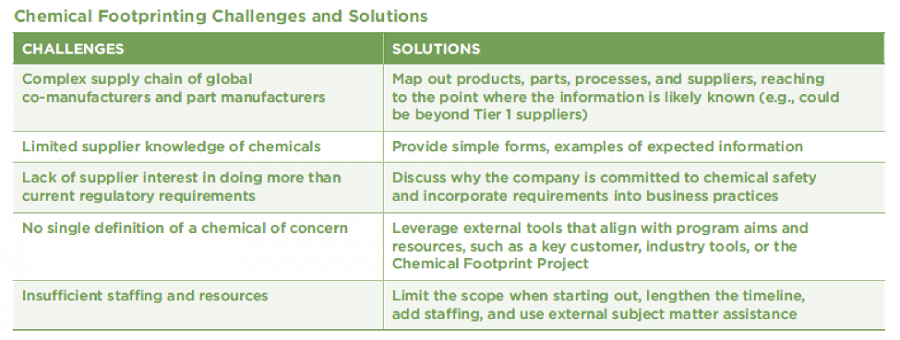In tandem with the rise in interest in green chemistry, companies are increasingly looking to gain business value from sustainable chemicals management.
The key concepts: reducing risk from existing and emerging regulations while also helping to build consumer trust, meet customer demands and reduce testing costs. Nevertheless, shifting to a program aiming for safer materials demands program changes that many struggle to achieve.

Radio Flyer, the family-owned toy company, long has taken a precautionary approach to the materials used in products. Over the last five years, however, the company has taken steps to further improve the material health of products and manufacturing.
Still, Radio Flyer — a client of my company, Pure Strategies — also has worked to overcome challenges when it comes to clearly measuring the status and tracking the progress of their material safety efforts.
As Eric Selner, director of operations and sustainability at Radio Flyer, summarized, “You get better at what you measure.”
Measuring the chemical footprint
After taking the Chemical Footprint Project survey in 2015, its inaugural year, Radio Flyer identified quantifying its footprint as a key opportunity. This meant the company would seek greater transparency in its supply chain to be able to understand the amount of chemicals of concern in its products.
Knowing that having a metric would provide a clear way to review and communicate the company’s progress, Selner and his team began the process to calculate the company’s chemical footprint. Those steps included:
1. Defining the scope of the footprint
2. Developing a system map
3. Creating a material inventory
4. Assessing chemicals of concern
To get started, Radio Flyer selected key products in itsportfolio that represented over 80 percent of the sales volume and each of the main product lines. The aim was to understand all intentionally added materials in these products and identify those considered chemicals of concern, as defined by the Chemical Footprint Project.
The company determined where it needed to collect the information, which was complicated because all manufacturing is contracted. Strong relationships with Tier 1 suppliers helped connect Radio Flyer with upstream suppliers that held much of the needed information.

A notable challenge came when the team began reaching out to the upstream suppliers. While Radio Flyer provided information about why they wanted more data than currently required by regulations and retailer requirements, most suppliers needed help to understand what to provide as it was the first time they had such a request. Some suppliers were also skeptical of the value of sharing the information.
Radio Flyer provided the suppliers with simple forms to fill out along with examples of completed forms. The company also spent time with the suppliers to discuss the company’s commitment to chemical safety and stressed that this will be incorporated into its business requirements.
Built-in business benefits
Radio Flyer since has identified solutions to help overcome common challenges that arise in efforts to advance safer materials. A few examples: Setting a manageable scope at the program outset; supporting suppliers with examples of the expected data; and spending time with suppliers (face-to- face) to clarify the request and value of providing the information.
Through this supply chain engagement, the company strengthened its relationships and learned more about not just the chemicals used, but also the processes and protocols at its suppliers. This yielded greater confidence and ultimately cost savings for some materials through reduced Radio Flyer-led auditing and testing.
Looking ahead, Radio Flyer anticipates additional benefits including removing chemicals on the company’s restricted substances list (RSL) ahead of schedule and taking additional steps toward using safer materials.
Through this work, the company also anticipates that it will be better prepared for emerging regulations and customer requirements and continue to build consumer trust.
Other companies using chemical footprinting to help manage and advance their safer materials strategy also have realized some of these benefits. Walmart, for instance, has reduced the use of chemicals of concern in products in its store. Seventh Generation uses safer chemicals to build consumer loyalty.
Across sectors, it is increasingly clear that business value will come to those that can measure and manage material health in their supply chains.
This article originally appeared in GreenBiz.


